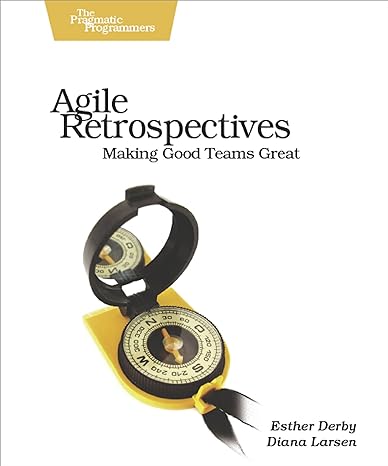Photo by Color Crescent on Unsplash
Who hasn’t experienced dreary sprint retrospectives? I am sure you have too – as a Scrum Master (SM), team member or coach. How you have dealt with them depends on your role and motivation. You could have taken them with a pinch of resignation or railed against them or split hair trying various tips and tricks to liven up the proceedings!
You may have found a number of such tips and tricks handed down by generations of Scrum Masters and coaches. Many of them have their origins in the classic book – Agile Retrospectives: Making Good Teams Great. The authors are Esther Derby and Diana Larsen who in 2003 were honoured with the title Retrospective Goddesses at the annual Retrospective Facilitators Gathering in Baden, Austria. How about that!
When I mentioned the above book to a newbie SM, she was thrown by the fact that an entire book of over 150 pages has been written on just Agile Retrospectives! The authors must surely be goddesses – somewhat verbose ones perhaps, she thought. Since she herself was struggling a bit with retrospectives, she needed no more than a little prod to pick up the book and give it a read. After a couple of weeks, I ran into her and asked her about it. The first thing she said was that every single page was of value and far from being verbose. I probed further and asked her what she liked and disliked about the book.
She thought for a moment and came up with the following nuggets from the book:
- The
team must see value in whatever they do; in the case of retrospectives, the test
of value is whether the team sees improvements resulting from them. Achieving
this is not going to be possible with just a loose discussion on “what went
well”, “what did not” and “what can be improved”; there has to be a structure for
it and the goddesses offer precisely that structure – the steps in
retrospective – comprising:- Setting
the stage (including the goal for each retro, team agreements etc.), Gathering &
presenting data on the past sprint, Generating team insights from the data, Deciding
on what to do about them and Closing the retrospective - Guidance
on each step above with various possible activities and tools for them; with
real-life examples throughout the book
- Setting
- The
key is to customize the above steps for every team and project context to make
the retro session come alive - The
intent of the retrospective is not to use it simply as a problem-solving
session; such sessions should be done separately; the idea is to look at the
data (hard data such as velocity, achievement of sprint goals etc) and soft
aspects (team agreements, team work, team member feelings etc.) and develop
insights; such insights should lead to experiments and improvement actions by
the team in forthcoming sprints - It
is important to follow the Agile principles in retros as well – for example, the
principle of “simplicity” by choosing the simplest of improvement actions – and
not have too many land at the door of management; the principle of “inspect and
adapt” by having a retro on retro itself (in “Closing the retrospective”) - People
who lead retros (typically SMs) need solid preparation and excellent facilitation
skills
So, you see what the newbie SM found was that the book is not just a collection of tips and tricks but provides a well-thought-through framework for retrospectives. And the great thing, she said, is that it provoked her thinking to get creative and build on the foundations laid in the book.
Hope the above encourages you to go to the Retro Goddesses and take a look / re-look at the book! Every time I do, I seem to find new nuggets…





